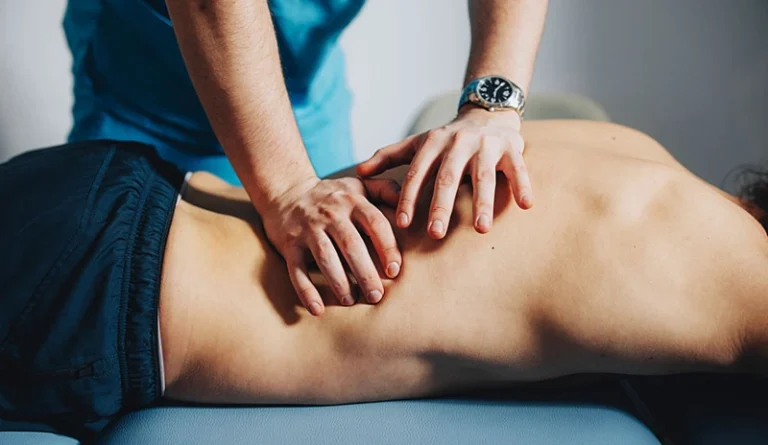Do you have a deep tissue massage scheduled? Worried about the soreness afterwards? If you want to recover quickly from a deep tissue massage, there are certain tips you can follow to reduce soreness and speed up healing time. In this article, we’ll provide some advice on how to recover from a deep tissue massage, so you can get back to your regular activities as soon as possible.
Contents
What is a Deep Tissue Massage?
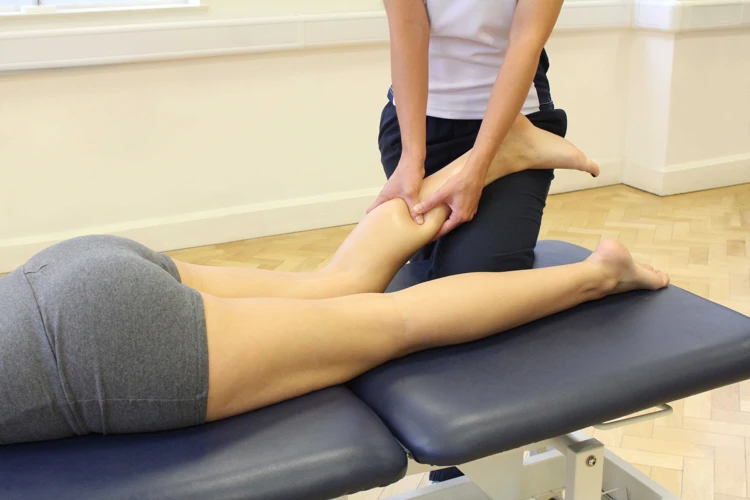
A deep tissue massage is a type of massage therapy that focuses on realigning deeper layers of muscles and connective tissue. It is especially helpful for chronically tense and contracted areas such as stiff necks, low back tightness, and sore shoulders. During a deep tissue massage, the massage therapist uses slow strokes and deep finger pressure to release tension from the muscle and fascia, or connective tissue surrounding muscles.
Deep tissue massage is often used in combination with other massage techniques. Common techniques used include myofascial release, trigger point therapy, and sports massage. By using a combination of techniques, a deep tissue massage may help to reduce soreness and speed up recovery time.
How to Recover After a Deep Tissue Massage
It is important to take some time to rest and relax after a deep tissue massage to allow your body to fully benefit from the massage. Here are some tips to help you quickly recover from a deep tissue massage and reduce soreness:
- Stay hydrated – drink plenty of water both before and after a deep tissue massage.
- Avoid strenuous activities – avoid any strenuous activities for at least 24 hours after a deep tissue massage.
- Heat therapy – applying heat to the area can help to reduce soreness and speed up healing time.
- Take a warm bath – a warm bath can help to reduce soreness and relax the muscles.
- Gentle stretching – gentle stretching can help to reduce the stiffness and soreness.
Benefits of Deep Tissue Massage
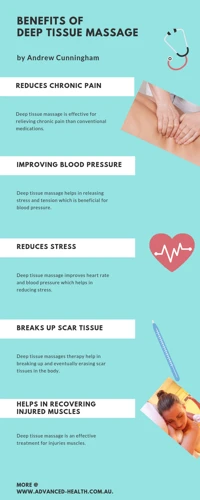
Deep tissue massage is an effective way to reduce muscle tension and soreness, as well as improve circulation, posture and flexibility. It can help with a range of conditions, such as chronic pain, muscle stiffness, and tension headaches. It can also help to reduce stress, improve sleep, and increase energy levels. The benefits of deep tissue massage include:
| Benefit | Description |
|---|---|
| Reduced Muscle Tension | Deep tissue massage helps to break down muscle knots and promote relaxation. |
| Improved Circulation | Deep tissue massage helps to increase blood flow to the affected area, promoting healing. |
| Increased Flexibility | Deep tissue massage helps to stretch and loosen tight muscles, increasing flexibility. |
| Stress Relief | Deep tissue massage helps to reduce stress levels, improving overall wellbeing. |
| Improved Sleep | Deep tissue massage helps to promote relaxation, leading to improved sleep. |
| Increased Energy Levels | Deep tissue massage can help to reduce fatigue and increase energy levels. |
Deep tissue massage is an effective way to improve overall health and well-being, but it can leave you feeling sore and stiff afterwards. If you have had a deep tissue massage, it is important to take rest and look after yourself afterwards in order to reduce soreness and speed up your recovery time.
Risks of Deep Tissue Massage
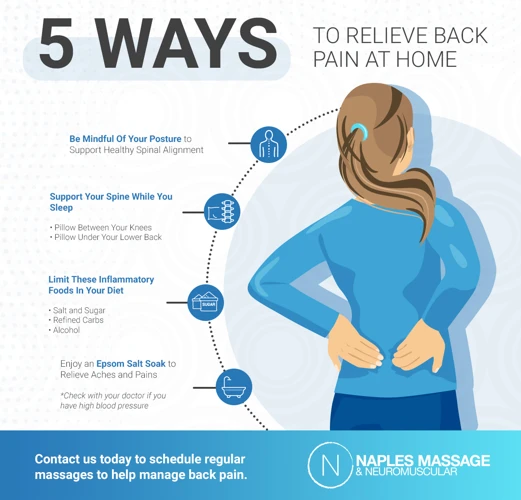
Deep tissue massage is a type of massage therapy that focuses on realigning deeper layers of muscles and connective tissue. It can be beneficial for chronic pain and muscle tension, however, it is not without risks. Some of the potential risks of deep tissue massage include:
| Risk | Description |
|---|---|
| Bruising | Bruising can occur, especially when using a deep tissue massage technique, such as kneading the muscles. |
| Pain | During and after massage, some people may experience discomfort or pain. This can be due to the pressure applied during the massage. |
| Infection | If the massage therapist is not properly sanitizing their tools and equipment, there is a risk of infection. |
| Stiffness | Deep tissue massage can lead to muscle stiffness or soreness in the hours or days following the massage. |
| Blood Clots | If the massage is too vigorous, it can lead to a formation of a blood clot, which can be dangerous. |
| Nerve Damage | If the massage therapist applies too much pressure, it can lead to nerve damage. |
It is important to communicate with your massage therapist if you experience any pain or discomfort during the massage. If you have any underlying medical conditions, it is best to consult with your doctor before receiving a deep tissue massage.
How to Prepare for a Deep Tissue Massage

1. Hydrate Yourself: Drink plenty of water before your massage appointment to ensure your body is properly hydrated. You should also avoid alcohol, caffeine, and nicotine for at least 24 hours prior to your massage.
2. Wear Loose Clothing: Wear comfortable, loose-fitting clothing to your massage session. This will minimize any restriction and allow your massage therapist to work more easily.
3. Communicate: Make sure to communicate your goals and expectations to your massage therapist prior to your session. This will help the therapist tailor the massage to your specific needs and ensure a more effective treatment.
4. Use Heat: Using a heat pack or warm bath before your massage can help to relax the muscles and prepare them for treatment. This can help improve the effectiveness of your massage session.
5. Avoid Eating: To ensure you do not feel uncomfortable or bloated during your session, it is best to avoid eating a heavy meal two or three hours before your massage.
Tips to Help Reduce Soreness After a Deep Tissue Massage
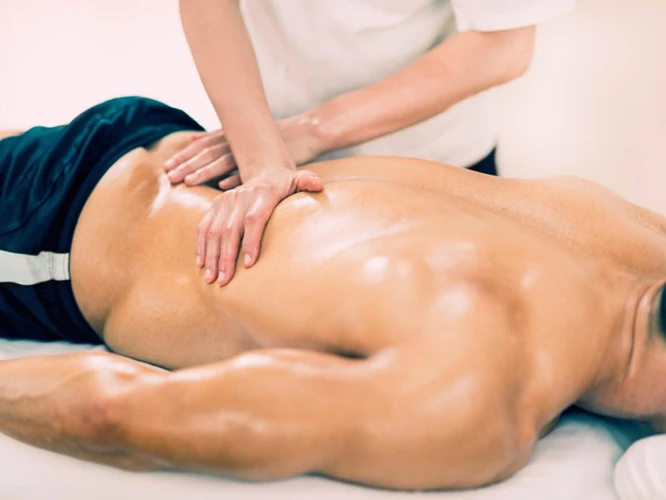
| Tip | Description |
|---|---|
| Drink Plenty of Water | It’s important to stay hydrated after a massage. Drinking plenty of water helps to flush out toxins and reduce inflammation in the muscles. |
| Take a Warm Bath | A warm bath can help to relax the muscles, reduce stiffness, and soothe soreness. Adding Epsom salts to the bath can help to reduce inflammation and speed up the healing process. |
| Apply Heat | Applying heat to the sore area can help to loosen tight muscles and reduce discomfort. This can be done with a hot water bottle, heating pad, or warm compress. |
| Gently Stretch | Gently stretching the area that was massaged can help to reduce stiffness and soreness. It’s important to be gentle and not over-stretch the muscles. |
| Get Plenty of Rest | Getting plenty of rest is key to speeding up the healing process and reducing soreness. Aim for at least 8 hours of sleep per night. |
| Take Anti-Inflammatory Medication | Taking an anti-inflammatory medication such as ibuprofen can help to reduce inflammation and ease soreness. Be sure to check with your doctor before taking any medication. |
How to Speed Up Healing Time

Stay Hydrated: Drinking plenty of water helps to flush out toxins from the body, which can speed up healing time. Make sure to drink at least 8 glasses of water a day.
Get Plenty of Rest: Getting plenty of rest is essential for the body to repair itself. Make sure to get at least 8 hours of sleep each night.
Use Heat: Applying heat to the affected area can help improve circulation and reduce inflammation. Use a warm compress or heated pad on the area for 10-15 minutes, several times a day.
Eat a Balanced Diet: Eating a balanced diet will help your body to repair itself. Make sure to include plenty of vitamins and minerals, such as zinc and magnesium, to help support the healing process.
Take Supplements: Taking supplements such as omega-3 fatty acids, glucosamine, and chondroitin can help to reduce inflammation and speed up healing time.
Avoid Stress: Stress can slow down the healing process. Try to practice relaxation techniques such as yoga and meditation to help reduce stress.
How Long Should You Wait to Have Another Deep Tissue Massage?

It is important to give yourself enough time to recover after a deep tissue massage. Depending on the intensity of the massage, the following are recommended wait times between sessions:
- Mild to moderate intensity: 1-2 weeks
- Moderate to high intensity: 2-4 weeks
- High intensity: 4-6 weeks
It is also important to keep in mind that the more frequently you have deep tissue massages, the longer you should wait in between sessions. This will allow your body to heal and restore itself from the massage. Additionally, if you experience pain or discomfort in the days following a deep tissue massage, wait until the discomfort has subsided before scheduling another session.
How to Care for Your Body After a Deep Tissue Massage
- Hydrate: It is important to drink lots of water after a deep tissue massage to help flush out toxins and reduce soreness.
- Rest: Getting plenty of rest is essential for the body to continue healing. Aim to get at least 8 hours of sleep each night.
- Ice and Heat: Applying ice or heat can help reduce muscle soreness and tension. Ice is best used immediately after the massage, while heat can be used in the following days.
- Gently Move: Moving around and gently stretching can help reduce soreness and improve circulation. However, avoid vigorous exercise for at least 24 hours after the massage.
- Avoid Alcohol and Caffeine: Drinking alcohol and caffeinated drinks can increase dehydration and muscle tension, so it is best to avoid them after a deep tissue massage.
- Eat Healthy Foods: Eating healthy foods can help the body repair and heal itself. Aim to include plenty of lean proteins, fruits, and vegetables in your diet.
Frequently Asked Questions
What are the Benefits of a Deep Tissue Massage?
Deep tissue massage is an effective technique for releasing muscle tension and reducing pain. Benefits of this massage include improved circulation, increased flexibility, and reduced stress. It can also help to increase range of motion and decrease muscle fatigue, as well as improve posture and reduce the risk of injury.
What Should I Do Before and After a Deep Tissue Massage?
Before the massage, it is important to hydrate and avoid eating a heavy meal within a few hours of the treatment. It is also important to communicate any health issues or areas of the body that are sensitive or tender.
After the massage, it is important to drink plenty of water, as this will help flush toxins out of the body and reduce soreness. Hot and cold treatments can be used to reduce inflammation and aid recovery. Additionally, gentle stretching and yoga can be helpful for relieving tension and reducing soreness.
How long does it usually take for soreness to go away?
Soreness after a deep tissue massage typically lasts for up to 48 hours, though it can linger for up to 72 hours in some cases. The intensity of the soreness is dependent on the pressure used during the massage and the individual’s sensitivity to touch. In general, the more intense the massage, the more soreness an individual will feel.
Tips to Reduce Soreness and Speed Up Healing Time:
- Drink plenty of water after the massage to help flush out toxins.
- Take a warm shower or bath to help relax the muscles.
- Apply a cold compress or ice to the affected area to reduce inflammation.
- Avoid strenuous activities for the first 24 hours after the massage.
- Take an over-the-counter pain reliever to reduce discomfort.
- Get plenty of rest to allow the body to heal.
Are there any exercises or stretches that can help with the recovery process?
Yes. Exercises and stretches can help with the recovery process, as they can improve circulation and reduce tension in the muscles and soft tissue. Here are some exercises or stretches that can help:
- Yoga: Yoga can help to reduce soreness and tension in the body, while also improving flexibility and range of motion.
- Stretching: Gentle stretching can help to reduce tension in the muscles and improve circulation.
- Strength Training: Strength training can help to reduce soreness and tension in the muscles, while also improving strength and endurance.
- Aerobic Exercise: Aerobic exercise can help to reduce soreness and improve circulation, while also increasing endurance and energy levels.
It is important to remember to take it easy after a deep tissue massage and not to push yourself too hard. Start slowly and gradually increase the intensity of your workouts, as your body adapts.
Are There Any Tips for Avoiding Soreness After a Deep Tissue Massage?
Hydrate: Staying hydrated before and after a deep tissue massage is essential. Drinking plenty of water before and after the massage will help to flush out toxins and reduce soreness.
Stretch: Moving around and stretching after the massage will help to reduce soreness and prevent stiffness.
Eat Well: Eating a nutritious meal after a massage will help to replenish your body and provide needed nutrients for healing.
Apply Heat: Applying a heating pad or taking a warm bath after the massage can help to reduce soreness and speed up the healing process.
Take a Break: Avoid overworking the same muscles after a massage by taking a few days off from strenuous activities. This will help to prevent further soreness and allow your body to heal.
Conclusion
Deep tissue massage can help with chronic pain and tension, but it can be uncomfortable. To reduce soreness and speed up healing time, it is important to take care of your body before, during, and after the massage. This includes drinking plenty of water, gently stretching the muscles, and applying heat or cold therapy as needed. Taking a warm bath or shower, eating nutritious foods, and avoiding strenuous activities can also help your body to recover quickly.

